
Lüderitz: Namibia's Hidden Coastal Gem
Discover Lüderitz, Namibia's coastal gem, where German colonial charm meets stunning desert landscapes and vibrant marine life.
Nestled between the vast Namib Desert and the cold Atlantic Ocean, Lüderitz is a charming coastal town in Namibia that offers a unique blend of natural beauty and historical intrigue. This remote oasis is characterized by its rugged coastline, pristine beaches, and the stark beauty of the surrounding desert landscape. Visitors are often captivated by the town's distinctive German colonial architecture, which stands as a testament to its rich history as a former German colonial outpost. A stroll through Lüderitz's streets feels like a journey back in time, with colorful buildings and intricate facades that create a picturesque setting. The town's vibrant harbor is a hub of activity, where fishing boats bob gently and the salty sea breeze fills the air. Nearby, the ghost town of Kolmanskop offers a fascinating glimpse into the area's diamond mining past, with abandoned buildings slowly being reclaimed by the encroaching desert sands. For nature enthusiasts, Lüderitz is a gateway to some of Namibia's most breathtaking landscapes. The nearby Sperrgebiet National Park, also known as the Diamond Area, is home to diverse flora and fauna, and its restricted access has preserved its pristine condition. The dramatic coastline, with its rocky outcrops and secluded beaches, provides a stunning backdrop for wildlife watching, including sightings of seals, penguins, and a variety of seabirds. Lüderitz is not just about history and nature; it also boasts a rich cultural scene. The town hosts an annual Crayfish Festival, celebrating the local seafood delicacy with music, dance, and culinary delights. The friendly locals add to the town's charm, always ready to share stories and offer a warm welcome to visitors. Whether you're exploring its historical sites, soaking in the natural beauty, or simply enjoying the laid-back atmosphere, Lüderitz promises an unforgettable experience.
Local tips in Lüderitz
- Visit the ghost town of Kolmanskop early in the morning to capture the best light for photography.
- Wear layers; Lüderitz can be chilly due to the Atlantic breeze, even when the sun is shining.
- Book tours to the Sperrgebiet National Park in advance; access is restricted and permits are required.
- Try the local seafood, especially during the Crayfish Festival if your visit coincides with it.
- Take a boat tour to see the marine wildlife, including seals and penguins, up close.
Lüderitz: Namibia's Hidden Coastal Gem
Nestled between the vast Namib Desert and the cold Atlantic Ocean, Lüderitz is a charming coastal town in Namibia that offers a unique blend of natural beauty and historical intrigue. This remote oasis is characterized by its rugged coastline, pristine beaches, and the stark beauty of the surrounding desert landscape. Visitors are often captivated by the town's distinctive German colonial architecture, which stands as a testament to its rich history as a former German colonial outpost. A stroll through Lüderitz's streets feels like a journey back in time, with colorful buildings and intricate facades that create a picturesque setting. The town's vibrant harbor is a hub of activity, where fishing boats bob gently and the salty sea breeze fills the air. Nearby, the ghost town of Kolmanskop offers a fascinating glimpse into the area's diamond mining past, with abandoned buildings slowly being reclaimed by the encroaching desert sands. For nature enthusiasts, Lüderitz is a gateway to some of Namibia's most breathtaking landscapes. The nearby Sperrgebiet National Park, also known as the Diamond Area, is home to diverse flora and fauna, and its restricted access has preserved its pristine condition. The dramatic coastline, with its rocky outcrops and secluded beaches, provides a stunning backdrop for wildlife watching, including sightings of seals, penguins, and a variety of seabirds. Lüderitz is not just about history and nature; it also boasts a rich cultural scene. The town hosts an annual Crayfish Festival, celebrating the local seafood delicacy with music, dance, and culinary delights. The friendly locals add to the town's charm, always ready to share stories and offer a warm welcome to visitors. Whether you're exploring its historical sites, soaking in the natural beauty, or simply enjoying the laid-back atmosphere, Lüderitz promises an unforgettable experience.
When is the best time to go to Lüderitz?
Iconic landmarks you can’t miss
LÜDERITZ NEST HOTEL
Discover the Lüderitz Nest Hotel: A coastal retreat with breathtaking ocean views, luxury amenities, and rich Namibian history.

Kolmanskop
Explore the haunting beauty of Kolmanskop, a ghost town that tells the story of Namibia's diamond mining era amidst stunning desert landscapes.
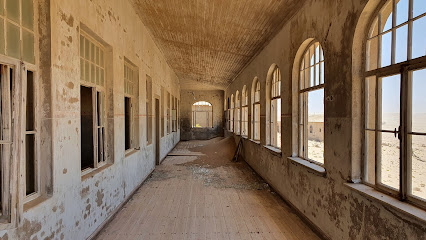
Site of Original Dias Cross
Explore the historic Site of the Original Dias Cross in Luderitz, a scenic landmark celebrating maritime exploration and cultural heritage.
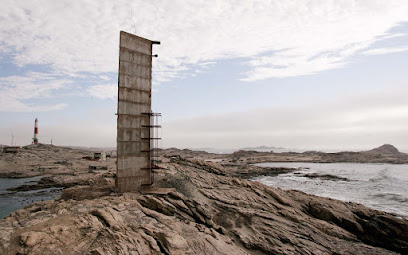
Obelix Guesthouse
Discover the charm of Luderitz at Obelix Guesthouse, your cozy retreat surrounded by stunning landscapes and rich culture.

Robert Harbour
Explore Robert Harbour in Lüderitz, Namibia - a stunning tourist attraction filled with history, adventure, and breathtaking coastal views.
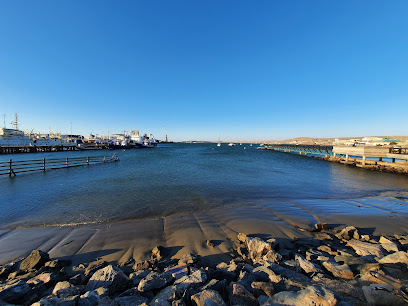
Kratzplatz
Experience the charm of Luderitz at Kratzplatz, your serene hotel retreat with modern comforts and easy access to Namibia's stunning coastline.

The Cormorant House
Discover the charm of The Cormorant House in Luderitz, a cozy hotel perfect for exploring the stunning landscapes and rich history of Namibia.

Kairos Cottage
Experience the serene charm of Kairos Cottage in Luderitz, Namibia - your perfect retreat for relaxation and exploration.

Felsenkirche
Discover the stunning Felsenkirche in Luderitz, a striking Gothic church offering breathtaking views and rich historical significance.
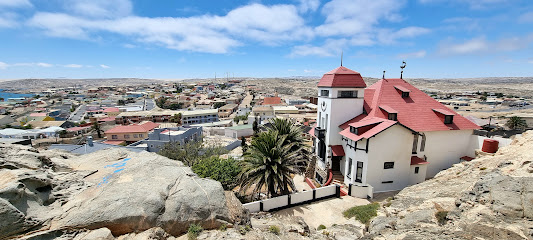
Alte Villa
Discover the charm and comfort of Alte Villa in Luderitz, a perfect blend of modern amenities and historical elegance in the heart of Namibia's coastal beauty.
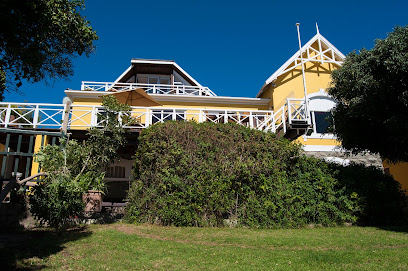
Lüderitz Zum Sperrgebiet
Discover the unique blend of lodging and local cuisine at Lüderitz Zum Sperrgebiet, a charming hotel and restaurant in Lüderitz, Namibia.

Villelodge Accommodation
Experience the charm of self-catering accommodation in Lüderitz, offering comfort, stunning views, and local attractions at your doorstep.
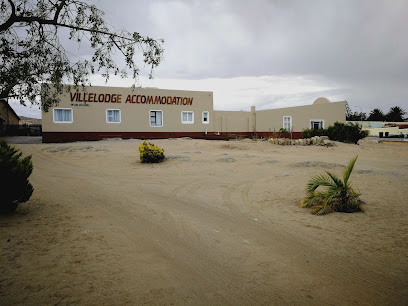
Woermannhaus
Explore Woermannhaus in Lüderitz, a stunning historical landmark that showcases the rich colonial heritage and unique architecture of Namibia's coastline.
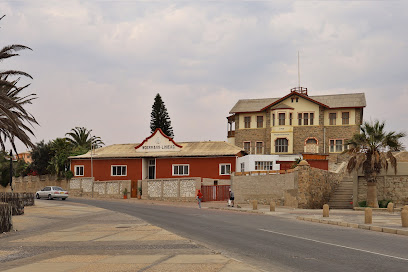
Penguin Catamaran Tours
Discover the marine wonders of Namibia with Penguin Catamaran Tours, offering unforgettable wildlife excursions and stunning coastal views.
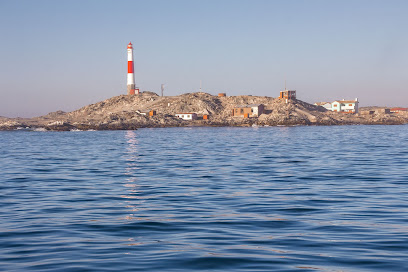
Coastways service station
Discover convenience and local charm at Coastways Service Station, your essential stop in Luderitz for fuel, snacks, and travel essentials.
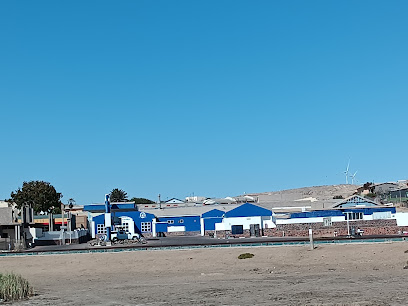
Unmissable attractions to see
Kolmanskop
Explore Kolmanskop, a hauntingly beautiful ghost town in Namibia, steeped in history and surrounded by stunning desert landscapes.
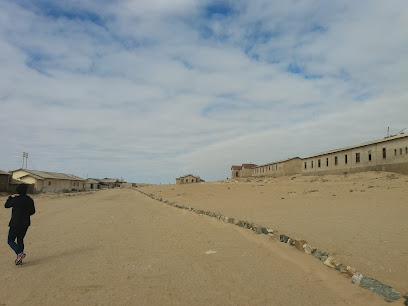
Site of Original Dias Cross
Explore the historic Site of the Original Dias Cross in Luderitz, a landmark of maritime history and breathtaking coastal views.
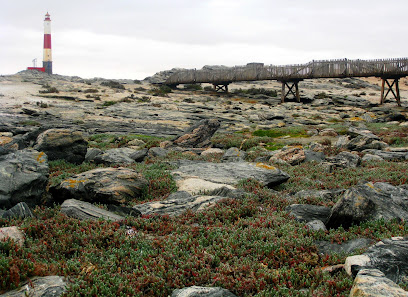
Robert Harbour
Explore the beautiful Robert Harbour in Luderitz, where stunning ocean views meet vibrant local culture and maritime history.

Felsenkirche
Discover the architectural beauty and spiritual serenity of Felsenkirche, Luderitz's iconic rock church offering stunning ocean views.
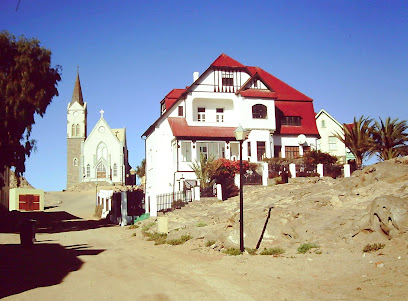
Shark Island
Explore the pristine beaches and vibrant marine life of Shark Island, a hidden gem in the Atlantic Ocean perfect for relaxation and adventure.
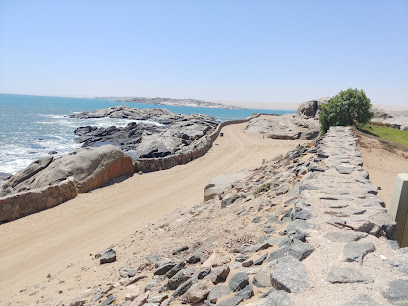
Woermannhaus
Discover the architectural beauty and historical significance of Woermannhaus, a landmark that embodies Lüderitz's rich colonial history.
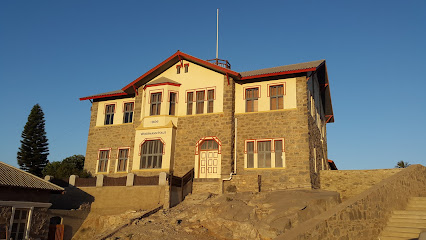
Goerke Haus
Discover the historical elegance of Goerke Haus, a cultural landmark in Luderitz showcasing stunning colonial architecture and rich heritage.
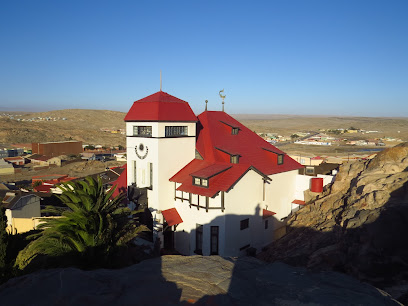
Penguin Catamaran Tours
Explore the stunning coastline of Luderitz, Namibia with Penguin Catamaran Tours, where adventure meets tranquility on the open sea.
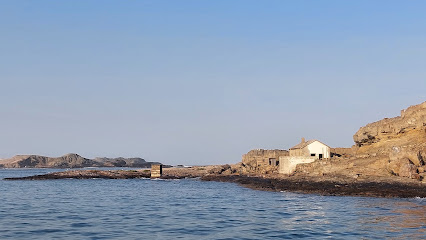
Grosse Bucht
Discover the stunning Grosse Bucht bay in Luderitz, where history meets breathtaking natural beauty amidst serene coastal landscapes.
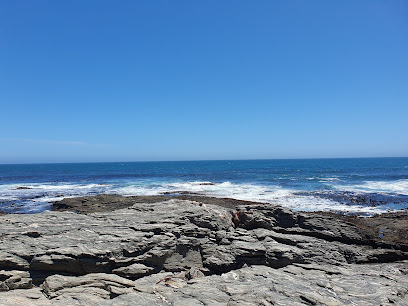
Lüderitz Museum
Explore Lüderitz Museum - A Gateway to the Rich History and Culture of Namibia's Coastal Heritage.
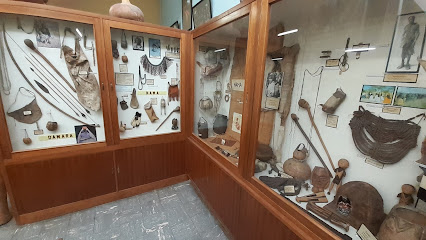
LÜDERITZ
Explore Lüderitz, Namibia: A coastal treasure with rich history, stunning landscapes, and charming German colonial architecture.
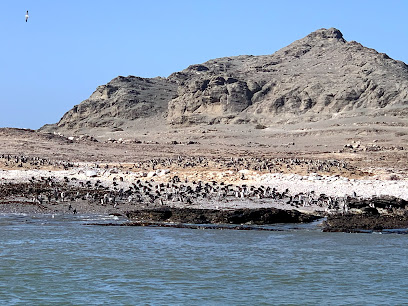
Shark Island Lighthouse
Experience the breathtaking views and rich history at Shark Island Lighthouse, a captivating tourist attraction in Luderitz, Namibia.
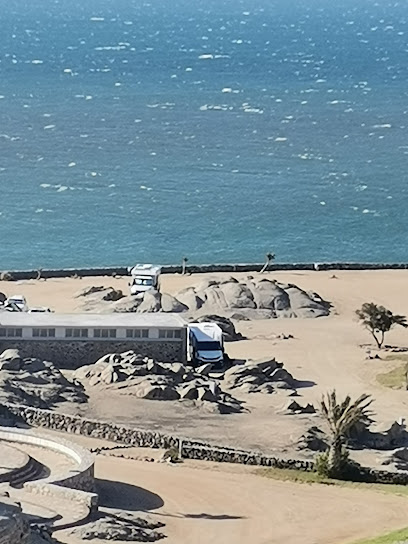
Diaz Point Lighthouse
Discover the historic Diaz Point Lighthouse in Luderitz, a stunning coastal landmark with breathtaking views and rich maritime heritage.
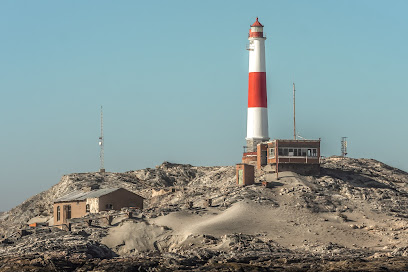
Lüderitz Concrete Letters
Discover the iconic Lüderitz Concrete Letters, a vibrant landmark offering stunning ocean views and a glimpse into Namibia's rich coastal heritage.
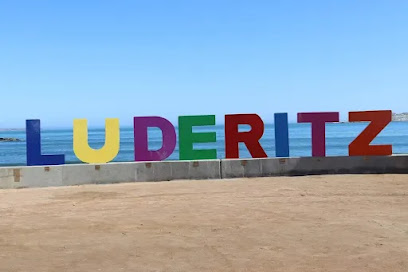
Zeepaard Boat Tours
Experience the captivating marine life and stunning landscapes of Luderitz with Zeepaard Boat Tours – an unforgettable adventure awaits.
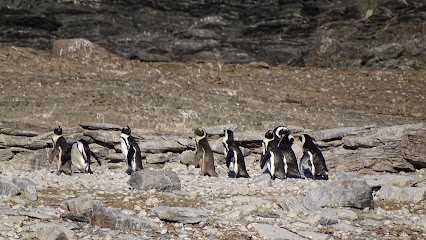
Essential places to dine
LÜDERITZ NEST HOTEL
Experience breathtaking coastal views and rich cultural heritage at Lüderitz Nest Hotel, your perfect retreat in Namibia.

Essenzeit
Discover the flavors of Namibia at Essenzeit in Luderitz – where fresh ingredients meet breathtaking coastal views.
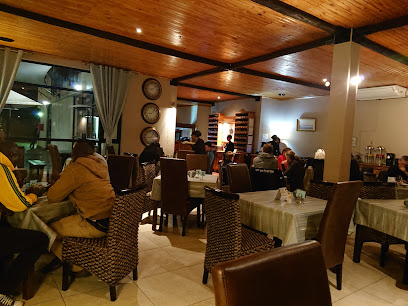
The Portuguese Fisherman Restaurant
Discover exquisite seafood dishes at The Portuguese Fisherman Restaurant in Lüderitz, where local flavors meet coastal charm.
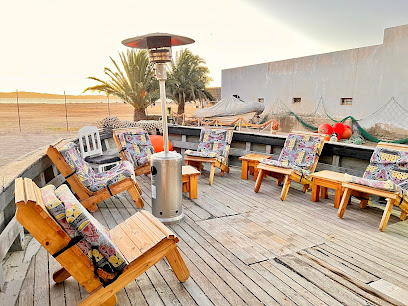
SPAR Lüderitz
Explore SPAR Lüderitz for fresh produce and local goods at affordable prices while experiencing Namibian hospitality.
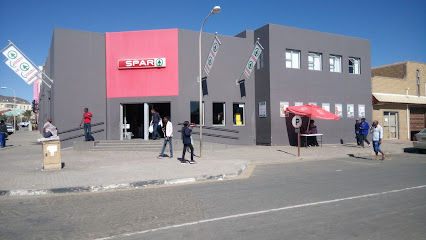
Diaz Coffee Shop and Restaurant
Experience delightful dining at Diaz Coffee Shop in Lüderitz—where local flavors meet warm hospitality in an inviting atmosphere.
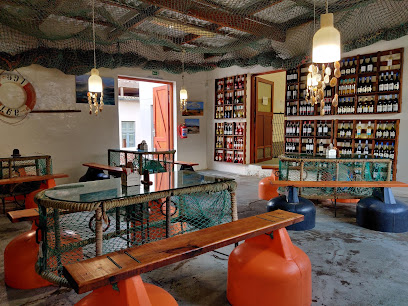
Ritzi's Seafood Restaurant
Experience the finest seafood dining at Ritzi's Seafood Restaurant in Luderitz, where local flavors meet stunning ocean views.
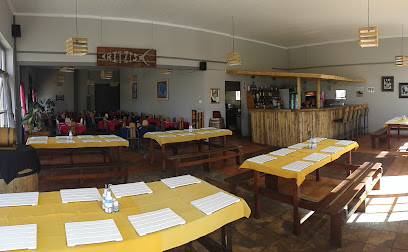
Obelix Guesthouse
Discover comfort and local charm at Obelix Guesthouse in Luderitz – your perfect getaway on Namibia's stunning coastline.

Timo's Lodge
Discover comfort and convenience at Timo's Lodge in Luderitz - your perfect self-catering retreat near stunning coastal attractions.

Cosy Corner Coffee Shop
Discover comfort at Cosy Corner Coffee Shop in Luderitz - where delightful brews meet charming ambiance.
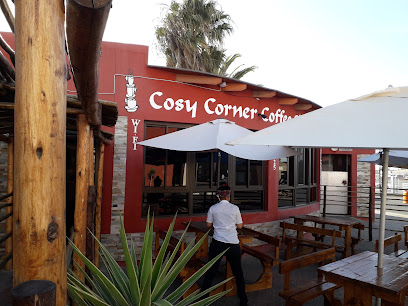
Kratzplatz
Discover unique charm at Kratzplatz Hotel in Lüderitz – your gateway to Namibia's stunning coastlines and rich history.

The Cormorant House
Experience comfort and stunning views at The Cormorant House in Luderitz – your gateway to Namibia's coastal treasures.

Kairos Cottage
Experience serene stays at Kairos Cottage in Luderitz, where comfort meets the beauty of Namibia's coastal landscapes.

OK FOODS - LUDERITZ
Experience local flavors and global goods at OK Foods in Luderitz - your ultimate grocery destination.
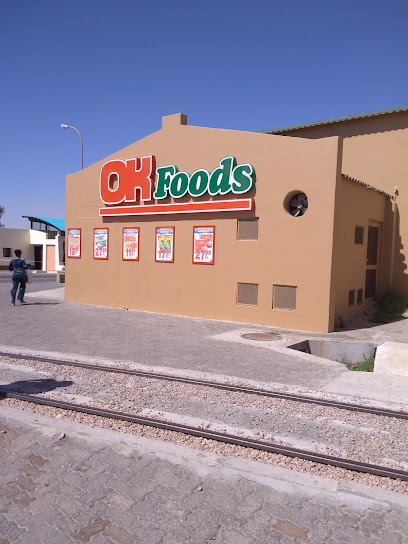
Barrels Pub & Restaurant
Discover local flavors at Barrels Pub & Restaurant in Luderitz - where great food meets vibrant atmosphere.
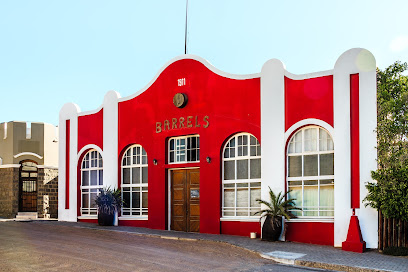
Luderitz Yacht Club
Discover Luderitz Yacht Club - A Culinary Gem Overlooking Stunning Coastal Views in Namibia's Charming Harbor Town.
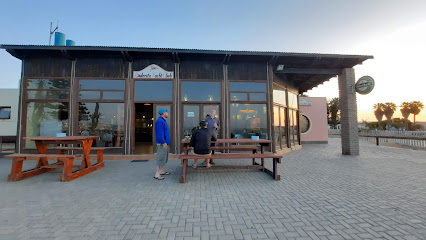
Markets, malls and hidden boutiques
Essenzeit
Discover the rich flavors of Namibia at Essenzeit, a charming restaurant in Luderitz offering a delightful culinary experience.
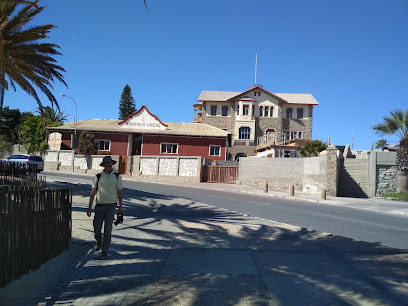
SPAR Lüderitz
Explore SPAR Lüderitz for fresh groceries, local delicacies, and all essentials during your Namibian adventure.
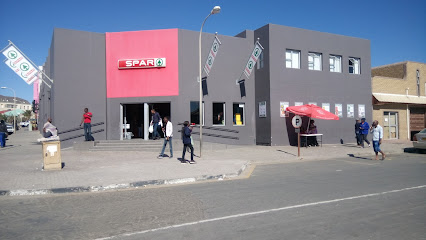
Diaz Coffee Shop and Restaurant
Experience the best of Lüderitz at Diaz Coffee Shop and Restaurant, where warmth and flavor meet in a cozy coastal setting.
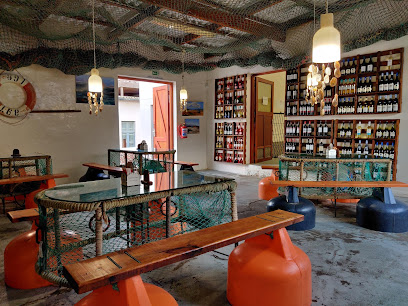
Cosy Corner Coffee Shop
Experience the cozy charm of Cosy Corner Coffee Shop in Luderitz, where delightful coffee and a warm atmosphere await every visitor.
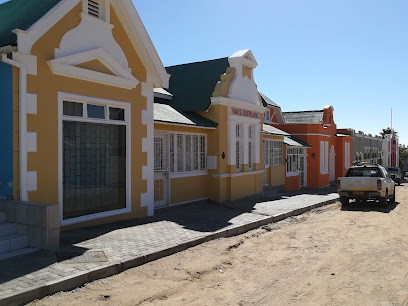
Kairos Cottage
Discover the charm of Luderitz at Kairos Cottage, your cozy retreat with stunning ocean views and easy access to local attractions.

OK FOODS - LUDERITZ
Discover local flavors and essentials at OK Foods, Luderitz’s go-to grocery store for tourists seeking Namibian delights.
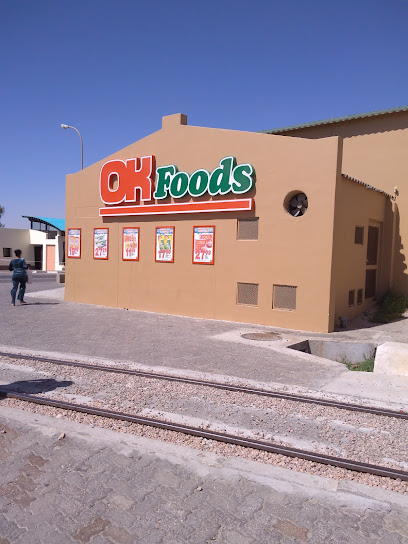
Felsenkirche
Explore the breathtaking Felsenkirche in Luderitz, a neo-Gothic masterpiece offering stunning ocean views and a glimpse into Namibia's rich history.
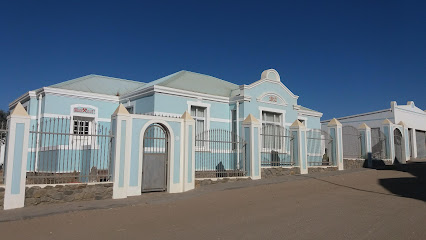
Woermannhaus
Discover the rich architectural heritage and captivating history of Woermannhaus, a must-see landmark in Luderitz, Namibia.
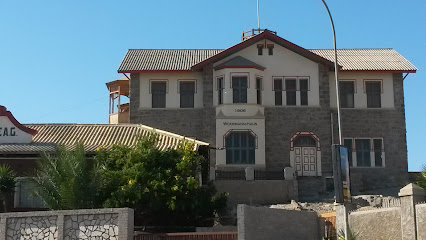
The Desert Deli
Discover the flavors of Namibia at The Desert Deli, a local favorite in Luderitz for fresh sandwiches and unique gifts.
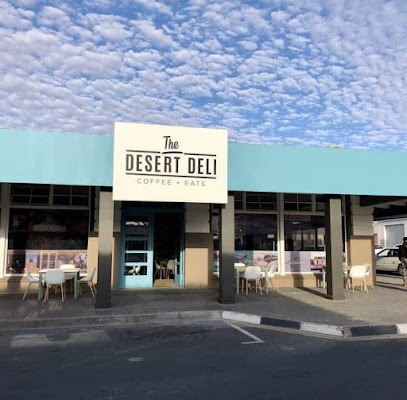
TrenTyre Lüderitz
Explore Lüderitz with confidence by ensuring your vehicle is ready for the road at TrenTyre, the leading tire shop in town.
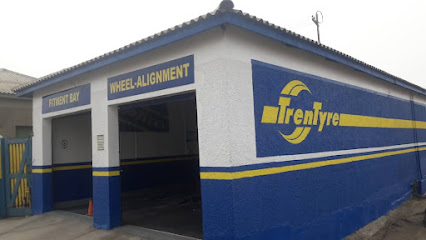
Kolmanskop Coffee Shop
Experience the unique charm of Kolmanskop Coffee Shop, where rich coffee meets the haunting beauty of a historic ghost town.
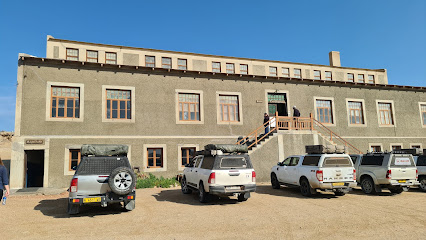
Lüderitz Museum
Explore the Lüderitz Museum for a captivating insight into Namibia's coastal history and culture, showcasing the region's unique heritage.
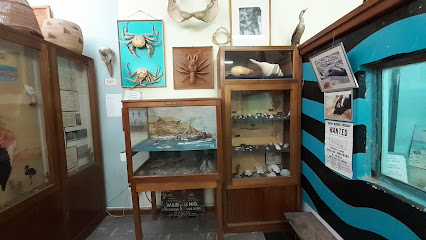
Pescanova Fish Shop
Explore the authentic flavors of Luderitz at Pescanova Fish Shop, where fresh seafood meets local culture.
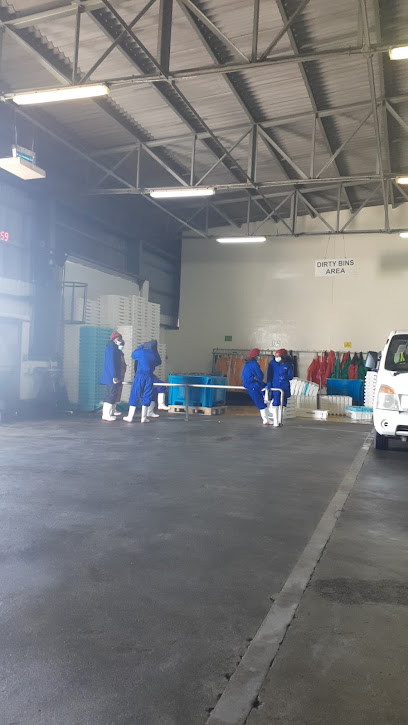
Plastic Packaging | Luderitz
Explore Luderitz's Plastic Packaging store for all your packaging needs amidst stunning coastal views and rich history.

Skip Skop Coffee Shop
Experience the serene ambiance and delightful flavors at Skip Skop Coffee Shop in Luderitz, where every sip tells a story.
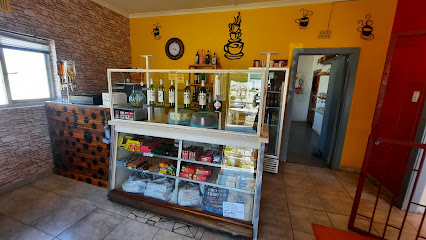
Essential bars & hidden hideouts
LÜDERITZ NEST HOTEL
Experience the beauty of Lüderitz at Lüderitz Nest Hotel, offering stunning ocean views and warm Namibian hospitality.

Essenzeit
Discover the culinary delights of Essenzeit in Luderitz, where local flavors meet international cuisine in a picturesque setting.
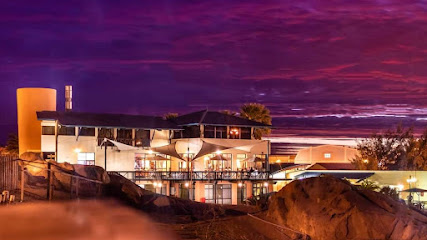
The Portuguese Fisherman Restaurant
Experience the best of Portuguese seafood in Lüderitz at The Portuguese Fisherman Restaurant, where fresh flavors and coastal charm meet.
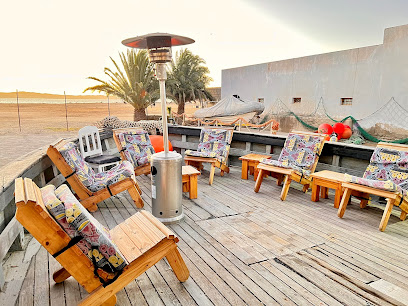
Diaz Coffee Shop and Restaurant
Experience the heart of Lüderitz at Diaz Coffee Shop and Restaurant, where local flavors meet a cozy ambiance for an unforgettable dining experience.
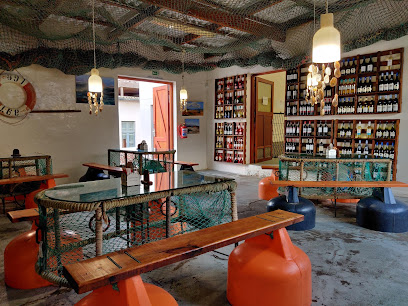
Ritzi's Seafood Restaurant
Experience the finest seafood dining at Ritzi's Seafood Restaurant in Luderitz, where local flavors meet stunning coastal views.
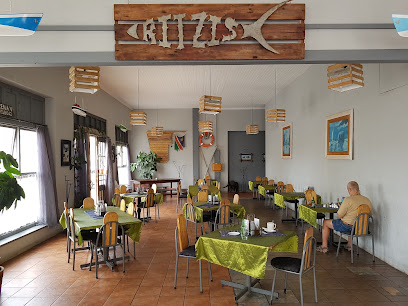
Obelix Guesthouse
Discover the charm of Luderitz at Obelix Guesthouse, your cozy retreat along Namibia's stunning southern coast.

Cosy Corner Coffee Shop
Experience the warmth and flavor of Luderitz at Cosy Corner Coffee Shop, your perfect café retreat in Namibia.
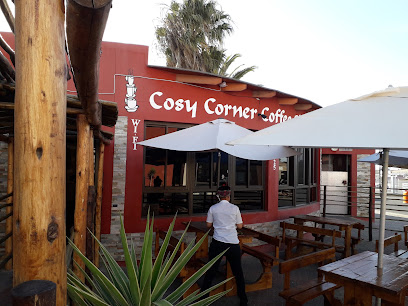
Barrels Pub & Restaurant
Discover the flavors of Luderitz at Barrels Pub & Restaurant, where local cuisine meets a cozy bar atmosphere.
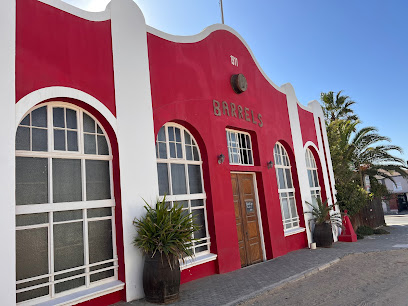
Luderitz Yacht Club
Experience the flavors of the sea at Luderitz Yacht Club, where stunning harbor views meet delicious Namibian cuisine in a relaxed setting.
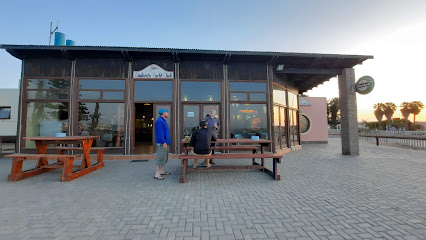
Lüderitz Zum Sperrgebiet
Experience the authentic taste of Namibia at Lüderitz Zum Sperrgebiet, where local flavors meet breathtaking ocean views.

Prospectors Inn Hotel
Discover the charm of Luderitz at Prospectors Inn Hotel, where delightful dining meets cozy accommodations and warm hospitality.
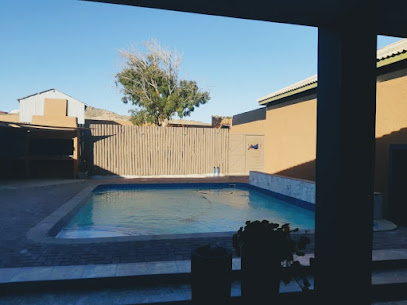
PENGUIN RESTAURANT
Experience the best of Lüderitz dining at Penguin Restaurant, where fresh seafood meets stunning ocean views in a cozy atmosphere.
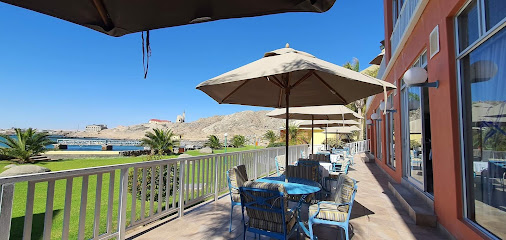
Nicky's Bistro
Experience the culinary charm of Luderitz at Nicky's Bistro, where local flavors meet international cuisine in a cozy atmosphere.
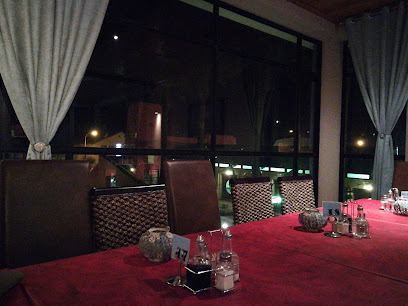
Club fountain
Experience the vibrant nightlife of Luderitz at Club Fountain, where local flavor meets a relaxed atmosphere.

Capricorn Lounge
Discover the vibrant atmosphere of Capricorn Lounge in Luderitz, where unique cocktails and a stylish setting await every traveler.
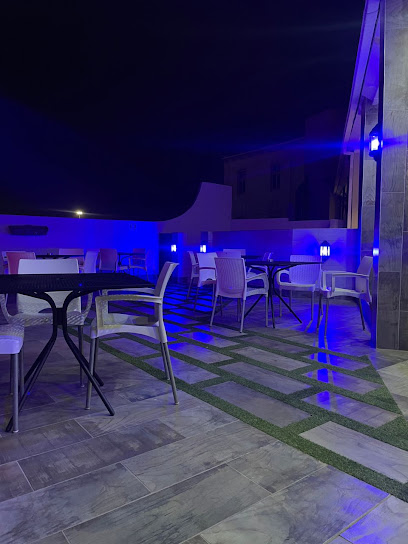
Local Phrases
-
- HelloHallo
[ha-lo] - GoodbyeTotsiens
[tut-see-ens] - YesJa
[ya] - NoNee
[nee] - Please/You're welcomeAsseblief
[us-suh-bleef] - Thank youDankie
[dun-key] - Excuse me/SorryVerskoon my
[fur-skoon may] - How are you?Hoe gaan dit met jou?
[huw gahn dit met yow] - Fine. And you?Goed. En jy?
[goot. en yay] - Do you speak English?Kan jy Engels praat?
[kun yay eng-gels praat] - I don't understandEk verstaan nie
[ek fer-staan nee]
- HelloHallo
-
- I'd like to see the menu, pleaseEk wil asseblief die spyskaart sien
[ek vil us-suh-bleef dee spays-kart seen] - I don't eat meatEk eet nie vleis nie
[ek ayt nee flays nee] - Cheers!Gesondheid!
[guh-sunt-hate] - I would like to pay, pleaseEk wil asseblief betaal
[ek vil us-suh-bleef buh-tahl]
- I'd like to see the menu, pleaseEk wil asseblief die spyskaart sien
-
- Help!Hulp!
[hulp] - Go away!Gaan weg!
[kahn vehg] - Call the Police!Bel die Polisie!
[bell dee puh-lee-see] - Call a doctor!Bel 'n dokter!
[bell un dohk-tuh] - I'm lostEk is verlore
[ek is fur-loh-ruh] - I'm illEk is siek
[ek is seek]
- Help!Hulp!
-
- I'd like to buy...Ek wil koop...
[ek vil kohp] - I'm just lookingEk kyk net
[ek kayk net] - How much is it?Hoeveel kos dit?
[huw-veel kohs dit] - That's too expensiveDit is te duur
[dit is tuh duhr] - Can you lower the price?Kan jy die prys laat sak?
[kun yay dee prees laht suhk]
- I'd like to buy...Ek wil koop...
-
- What time is it?Hoe laat is dit?
[huw laht is dit] - It's one o'clockDit is een uur
[dit is ayn oor] - Half past (10)Half tien
[hahf teen] - MorningOggend
[oh-ghunt] - AfternoonMiddag
[mid-dahg] - EveningAand
[ahnt] - YesterdayGister
[ghis-tur] - TodayVandag
[fun-dahg] - TomorrowMôre
[moh-ruh] - 1Een
[ayn] - 2Twee
[tway] - 3Drie
[dree] - 4Vier
[feer] - 5Vyf
[fayf] - 6Ses
[says] - 7Sewe
[seh-vuh] - 8Agt
[ahgt] - 9Nege
[nay-guh] - 10Tien
[teen]
- What time is it?Hoe laat is dit?
-
- Where's a/the...?Waar is 'n/die...?
[vahr is un/dee] - What's the address?Wat is die adres?
[vat is dee ah-dres] - Can you show me (on the map)?Kan jy my wys (op die kaart)?
[kun yay may vays (op dee kart)] - When's the next (bus)?Wanneer is die volgende (bus)?
[vuhn-neer is dee full-guhn-duh (buhs)] - A ticket (to ....)'n Kaartjie (na ....)
[un kart-yuh (nuh)]
- Where's a/the...?Waar is 'n/die...?
History of Lüderitz
-
Lüderitz was founded in 1883 by German merchant Adolf Lüderitz. He purchased the land from local Nama chief Josef Fredericks II. The town quickly developed as a trading post, leveraging its strategic coastal location.
-
During the late 19th and early 20th centuries, Lüderitz became an important location within German South-West Africa. The town was named after its founder and was a key site for colonial administration and infrastructure development. Buildings from this era, such as the Felsenkirche (Rock Church), are still standing today.
-
In 1908, diamonds were discovered near Lüderitz, leading to a massive influx of fortune seekers. The nearby town of Kolmanskop sprang up almost overnight, becoming a prosperous mining settlement. Lüderitz thrived during this period, as the diamond industry brought significant wealth and development to the region.
-
Kolmanskop, once a bustling mining town, was abandoned in the 1950s after diamond resources were depleted. Today, it stands as a haunting reminder of the diamond rush era. The desert has reclaimed much of the town, with sand-filled buildings offering a unique glimpse into the past.
-
During World War I, Lüderitz was occupied by South African forces in 1915. Following the war, the region was mandated to South Africa by the League of Nations. This period saw significant changes in administration and infrastructure, impacting the town's development.
-
Namibia gained independence from South African rule in 1990. Since then, Lüderitz has developed into a modern town while preserving its rich historical legacy. Today, it is known for its unique blend of colonial architecture, natural beauty, and cultural heritage.
Lüderitz Essentials
-
Lüderitz is located in the southwestern part of Namibia along the Atlantic coast. The nearest airport is Lüderitz Airport, which has limited flights mainly from Windhoek, the capital of Namibia. Alternatively, travelers can fly into Windhoek's Hosea Kutako International Airport and then take a domestic flight to Lüderitz or opt for a scenic road trip. The drive from Windhoek to Lüderitz takes approximately 8 to 10 hours. Travelers can also take a bus service from Windhoek to Lüderitz, although this is less common.
-
Lüderitz is a small town, and most of its attractions are easily accessible on foot. For longer distances, taxis are available, although it's advisable to arrange them through your accommodation or a trusted service. Car rentals are also an option and offer the flexibility to explore surrounding areas like the ghost town of Kolmanskop and the Lüderitz Peninsula. Be aware that roads outside the town are mostly gravel, so a 4x4 vehicle is recommended for more remote excursions.
-
The official currency of Namibia is the Namibian Dollar (NAD), which is pegged to the South African Rand (ZAR). Both currencies are used interchangeably in Lüderitz. Credit and debit cards are widely accepted in hotels, restaurants, and shops, but it is advisable to carry some cash for smaller establishments and markets. ATMs are available in Lüderitz, but it's a good idea to withdraw sufficient cash in Windhoek if you're arriving via the capital.
-
Lüderitz is generally a safe destination for tourists. However, it's important to take standard precautions. Avoid walking alone at night in isolated areas and keep your belongings secure, especially in crowded places. There are no specific high-crime areas targeting tourists, but staying vigilant is always recommended. Consult locals or your accommodation for advice on safe areas to explore.
-
In case of an emergency, dial 10111 for police assistance and 10177 for medical emergencies. Lüderitz has a local hospital and a few medical clinics for minor health issues. It's advisable to have travel insurance that covers medical emergencies. Pharmacies are available for over-the-counter medications. Always keep a copy of your travel insurance policy and emergency contacts with you.
-
Fashion: Do dress comfortably and modestly. Lightweight clothing is recommended due to the desert climate, but bring a jacket for cooler evenings. Avoid overly revealing attire. Religion: Do respect local customs, especially when visiting religious sites. Public Transport: Do be courteous and considerate to fellow passengers if you use local transport options. Don't expect frequent public transport services, as they are limited. Greetings: Do greet people with a friendly handshake. A smile and a simple 'hello' go a long way. Eating & Drinking: Do try local seafood, which is a specialty. Accept hospitality graciously and try to sample local dishes. Don't waste food, as it is considered disrespectful.
-
To experience Lüderitz like a local, visit the waterfront and the Lüderitz Museum to learn about the town's history and its German colonial heritage. Take a walk around the historic buildings, such as the Felsenkirche and Goerke Haus. Engage with locals at the seafood markets and enjoy fresh oysters and other seafood delicacies. Don't miss a trip to Kolmanskop, the famous ghost town, and explore the Lüderitz Peninsula for beautiful landscapes and wildlife. For a unique experience, participate in a guided tour to see the wild horses of the Namib Desert.
Trending Landmark in Lüderitz
Nearby Cities to Lüderitz
-
Things To Do in Keetmanshoop
-
Things To Do in Mariental
-
Things To Do in Walvis Bay
-
Things To Do in Swakopmund
-
Things To Do in Windhoek
-
Things To Do in Usakos
-
Things To Do in Karibib
-
Things To Do in Okahandja
-
Things To Do in Omaruru
-
Things To Do in Otjiwarongo
-
Things To Do in Outjo
-
Things To Do in Etosha Village
-
Things To Do in Tsumeb
-
Things To Do in Cape Town
-
Things To Do in Kimberley










